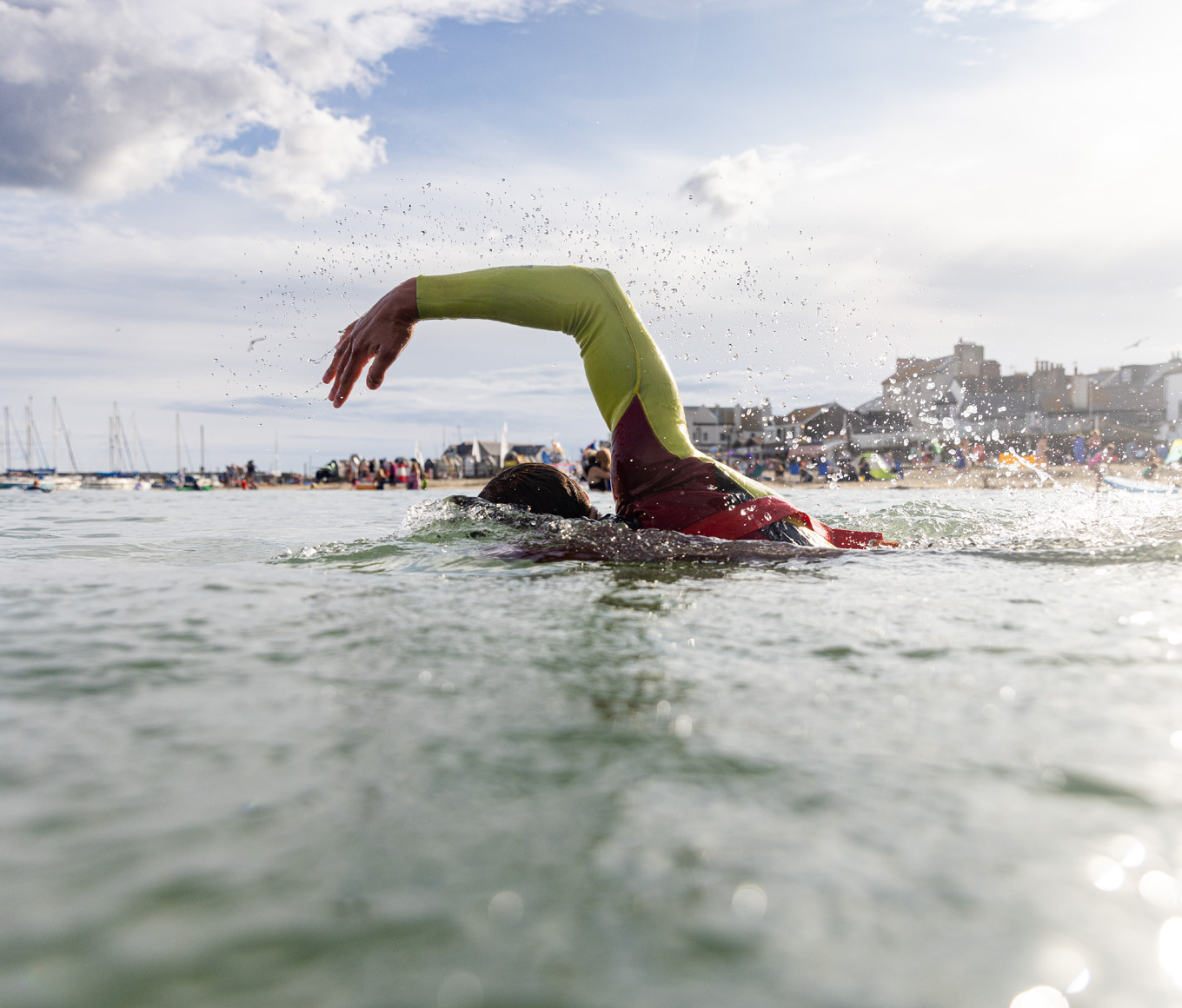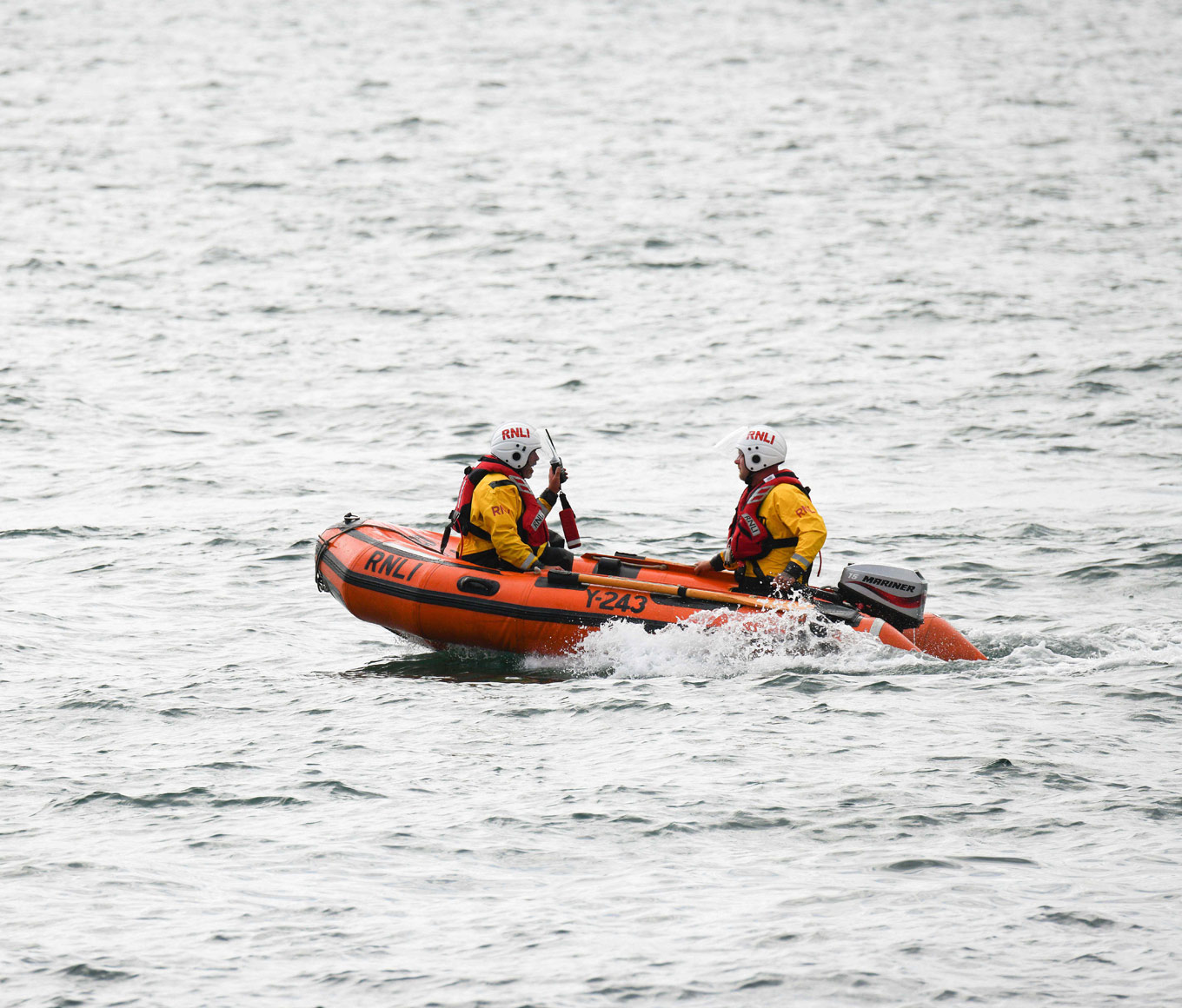
Saving Lives at Sea: Series 8 Episode 10
Discover more about the stories and stations featured in series 8 episode 10 of Saving Lives at Sea, with rescues from Bembridge, Anstruther, Cowes and St Davids.
When lifeboat crews can’t reach someone in danger, or if a casualty needs urgent care, a Coastguard helicopter will airlift them to safety – which you’ll have seen in this episode, where two people were stranded on a cliff. Have you ever wondered what it’s like to be airlifted from the sea? Watch this video to find out.
Bembridge: Guard ship grounded on submarine barrier
The episode started with the Bembridge crew launching to guard ship Sharon Vale, which had run aground on the submarine barrier between Horse Sand Fort and Southsea, with five people onboard. When they arrived alongside the ship, it was banging up and down, and getting damaged. The coxswain instructed two crew members to go onboard the ship straight away.
The ship was rapidly taking on water. The two volunteers asked the skipper to evacuate his crew to the Tamar class lifeboat, however he was insistent that the lifeboat crew tow them off the barrier instead. But if they towed the ship and damaged it any further, those onboard risked finding themselves in life-threatening danger.
After over 3 hours, the skipper finally agreed to transferring two of his crew to the lifeboat. But by now, the tide was starting to come in, causing the ship to float off the submarine barrier. Once it had drifted to a safer location, the crew helped them drop their anchor.
With the ship now safe, the two crew members went back onboard the lifeboat and made their way back to the station with the rest of the crew. Yarmouth’s Severn class lifeboat went out to act as a guard overnight, until a tug for Sharon Vale arrived the next morning.
Anstruther: Volunteers rescue man trapped under pontoon
Next, we saw Anstruther volunteers rush to a man who had fallen around 8 feet under the pontoon at the Reaper – a museum ship near the lifeboat station. At the scene, two volunteers climbed down the ladder at the pontoon to reach the man, while the crew at the station prepared the D class inshore lifeboat for launch.
The man, who was groaning in pain, had got stuck in thick mud underneath the pontoon. Once the volunteers pulled him out of the mud, they noticed that he was quickly developing symptoms of shock and hypothermia. His clothes were soaked through, so it was impossible for him to get warm. The volunteers needed to get him out of the cold water, fast.
The man was frightened and uncomfortable, but the two volunteers reassured him that more help was on the way. Nearly 10 minutes after they climbed down to the man’s rescue, the lifeboat arrived. The crew lifted him onboard the lifeboat and, conscious of his injuries, made their way back to the station as quickly as possible. They handed him over to a team of paramedics, who rushed him to hospital.
Cowes: Searching in the dark
The Cowes crew launched their B class inshore lifeboat after a 999 call came in about a missing man on a personal watercraft (often referred to as a jet ski). It was a cold evening in early November and darkness had set in. They believed the man was somewhere between Cowes and Southampton, so there was a huge area to cover – and the pitch-black skies ramped up the pressure even higher.
During their search, the Coastguard reported that the man had called 999 – he didn’t know where he was. With the search now covering an even larger area, the crew at Calshot launched their B class and D class lifeboats.
After half an hour of scouring the local shores, the Cowes crew had not seen any sign of the casualty. But just as they prepared to expand their search area, they spotted a fishing boat. As they got closer, they saw a man on his personal watercraft, which was tied to the boat. The crew were incredibly relieved that he was OK.
St Davids: Stranded on a cliff
Finally, we saw the St Davids crew launch their Tamar class lifeboat after a man and woman had been cut off by the tide near Caerfai Bay. In a bid to escape the rapidly incoming tide, they had scrambled halfway up a 20-metre-high cliff. But they quickly got stuck in a very precarious position on a narrow rock shelf.
Within 8 minutes, the crew arrived on the scene. Unable to get any closer because of the shallow, rocky waters below the cliffs, two of the crew brought out the small inflatable Y boat from beneath the Tamar’s stern. The tide was due to rise another 3 metres over the next 3 hours, so there was no time to waste.
The Coastguard rescue team arrived and prepared a rope rescue, and a helicopter was on its way. The rope technician made his way down the cliff and picked up the woman first, who was more distressed and uncomfortable, then lowered her into the Y boat at the bottom of the cliff.
But when the rope technician went back up to rescue the man, the rope had got stuck under a rock. Luckily, the Coastguard helicopter arrived just in time. The helicopter winch paramedic began their descent to the man and lifted him to safety. After nearly 3 hours of being stranded on the cliff, the couple were reunited on a neighbouring beach.
You may also enjoy the following










